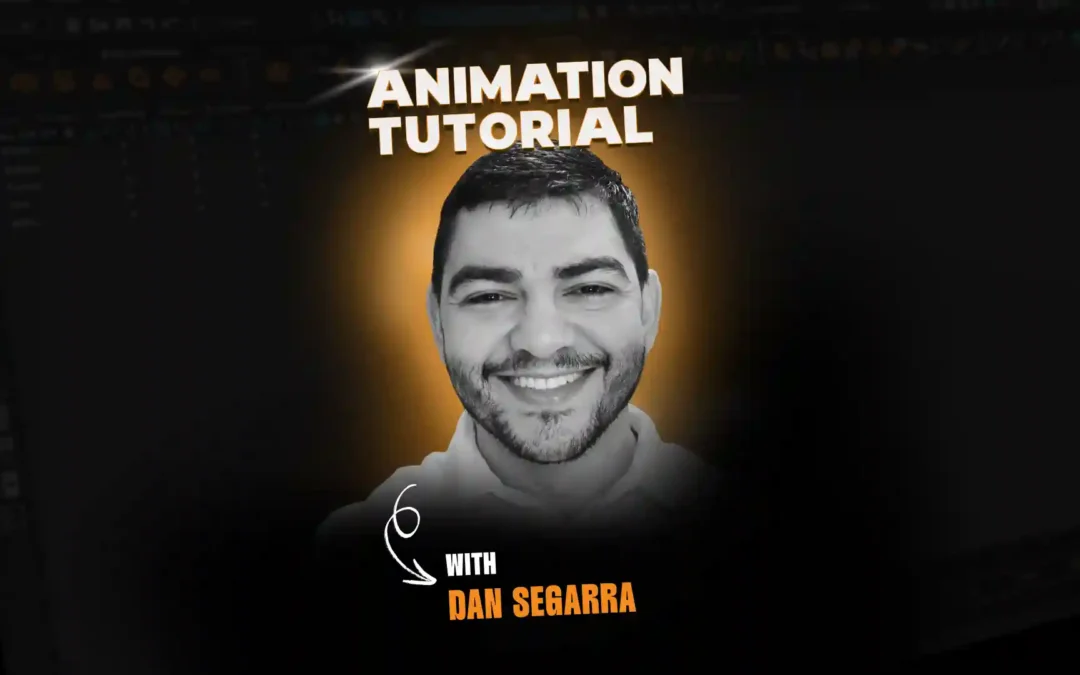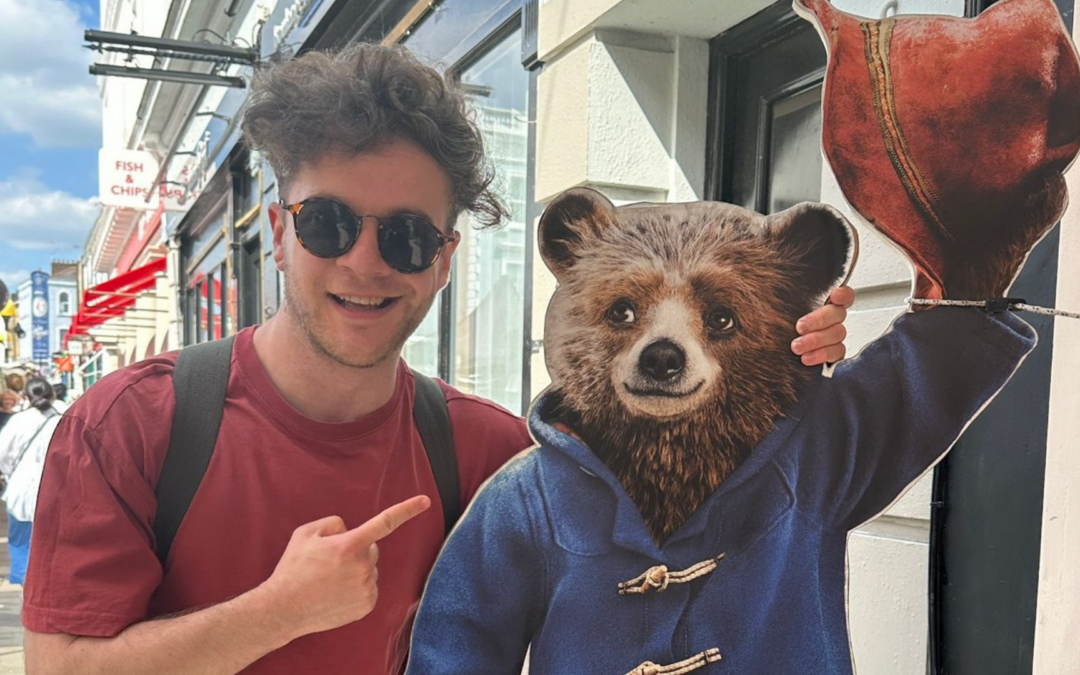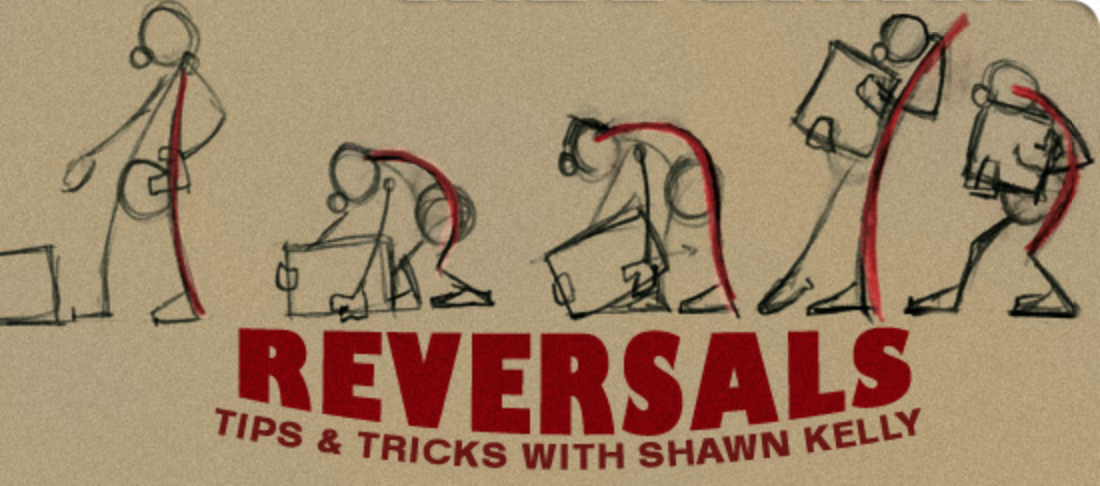
Reversals aren’t all that complicated, but lots of new animators haven’t heard of them! Here, Animation Mentor co-founder and ILM Lead Animator Shawn Kelly dives into what they are and how to use them to maximize the effectiveness of your animation. Enjoy!
Reversals aren’t terribly complicated, but I know a lot of people haven’t heard of them before if they aren’t in a good animation school, so let’s dive in!
What the heck is a reversal?! When you first hear that word, you probably think of someone changing their mind. They wanted pizza, but now they want fried chicken (and come on, who wouldn’t?!)—they’ve reversed their opinion. They’ve flip-flopped, right? Well, in animation, a reversal is essentially the same exact thing.
A reversal generally refers to an arc or line of action through the body mirroring into its “opposite” shape. More specifically, a reversal is usually associated with the curve of the spine mirroring in shape.
Got it? Ok, cool. See you guys next time!
Just kidding. That probably didn’t make sense at all, huh? Ok, let’s go through a more practical example. The most common would be the good ol’ box lift. It’s hard to find a better animation assignment than the classic, tried-and-true box lift. A box lift tests your skills in a wide variety of animation principles, and reversals are definitely one to look for in any box-lift assignment.
Buckle up, by the way, because I’m about to hit you with one of my shockingly primitive drawings. While I’d love to pretend that this drawing is so unimpressive merely because I’m feeling too lazy to re-draw this first thumbnail of my ideas, the truth is that it wouldn’t really get much better even if I re-drew it, so you might as well just stick with this one…
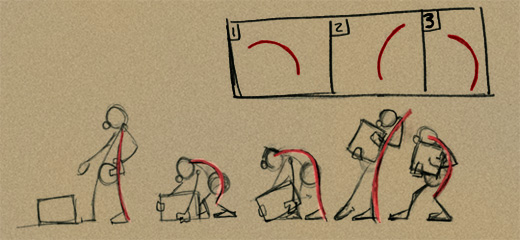
Ok, so what’s going on in this picture? Well, the crappily drawn stick-man is about to pick up a crappily drawn box. Are you with me so far?
So, here’s the deal. Knowing the idea of reversals HELPS the animator know the mechanics of the body. Check this out—this gets pretty cool:
We know certain things about how this crappily drawn dude needs to pick up his box, because of the principles of force, weight, balance, line of action, etc.—all of these things that you are studying dictate the way this guy’s body HAS to move, crappily drawn or not!
The great thing about reversals is that they can show power.
If this box is heavy, certain things MUST happen in this guy’s body in order for him to pick up the box. For one thing, he needs to get his butt and at least one foot as close as possible to the box, right? Otherwise, he’s going to fall forward, because the sudden introduction of the weight of the box will have to be held up by his feet, and compensated balance-wise by where he places his butt.
Another thing we know is that he is going to anticipate the lift a little bit by lowering his bum just before he lifts. We also know that his butt will probably lead the action, moving upwards until at least one of his arms straightens out. We also know that once that happens, if the box is really heavy, he will have to heave with his shoulders, keeping his arms mostly straight (usually).
The final thing I want to mention is that we know that as he heaves that box upwards, he is going to fall over if he doesn’t quickly scoot his butt forward to be beneath the box, so that the weight of his body and the weight of the box line up above his feet as much as possible.
Well, guess what happens when his shoulders go up/back, and his butt comes forward?
A REVERSAL!
Ta daa! See how it all comes together?

Here’s the photo again so you don’t have to scroll up.
Check out the pose marked #1. It’s sort of a ) shape. Well, that’s the best way I can show it on my keyboard anyway. But when those shoulders heave, and his butt comes forward to save him from falling over backwards, his spine REVERSES into a ( shape, as you can see in pose #2.
For me, this is the sort of thing that makes animation so interesting. You’ve got this giant (endless!) pile of skills and principles to learn, and they all really do come together magically when you’re creating an action like this. All of those things we just talked about can really be described by ONE animation concept—the reversal.
From #1 to #2, all you really need to know is that his spine will do a reversal, and boom—you’ve just built a great foundation of solid body mechanics into your scene! Now, it *IS* important that you know *WHY* there is a reversal. It’s essential to know what’s creating that reversal in order to really sell it, but this is a great example of one animation idea boiling down the essence of a variety of others into one key concept.
So, guess what happens between pose #2 and pose #3? Ok, dumb question, right? Another reversal.
But why?
Well, when he lets the weight of that box settle into his stomach or onto his waist/hips, what’s that weight going to do? It’s going to shove downward. The shoulders are going to relax as much as they can, dropping downwards. His hips will fall a bit as the weight settles into the legs. His spine is going to have to bend a bit for the box as his hips come forward a bit more in order to save him from falling forward.
All of these body mechanics are happening in order to keep this guy on his feet, and keep the box in his hands. And all of these body mechanics are creating this reversed spine as well!
Now, the great thing about reversals is that they can show power. They can communicate weight. Now that you’re thinking of them, watch how much you see them in the world around you. You’ll find them helping to create powerful baseball pitches, javelin throws, or tennis serves, not to mention jumps, pushes, pulls, and nearly any other forceful physical action you can think of.
The reversal is the visual description of what is going on in your body as it tries to build up force and power, as it curls around itself in order to coil and build power, or prepare to spring into action. We all know that anticipations create the power necessary for many actions (if you don’t believe this, try jumping without dropping your hips at all first!), and as do many other body mechanics, anticipations are a big part of what creates these reversals in the first place. Overlapping action, arcs, force, etc – all of these work together to CREATE the reversals, but the concept of reversals in and of themselves can be a powerful tool for the animator, and an easy way to meld so many animation ideas together into one performance.
The reversal is the visual description of what is going on in your body as it tries to build up force and power.
I’d caution you not to think of it as a shortcut, however. Don’t jump into a scene thinking “I’m going to create a reversal.” Rather, think about the body mechanics, what has to happen in order to sell the weight and action, and THEN look for opportunities to accentuate reversals and exaggerate the lines of action in the body to push that ever-elusive sense of weight even further!
Thanks for reading. Have fun, and as always—keep animating!!
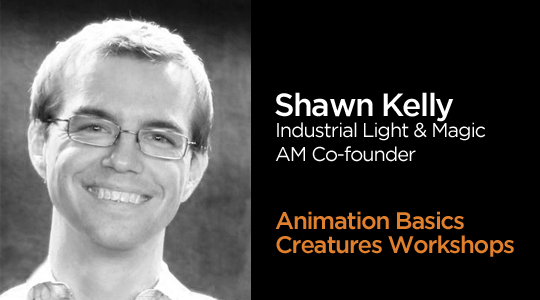
Want to learn animation from pros like Shawn?
Start your animation journey by learning with professional animators from a variety of studios and career paths! Get more information about Animation Mentor’s Character Animation Courses.
